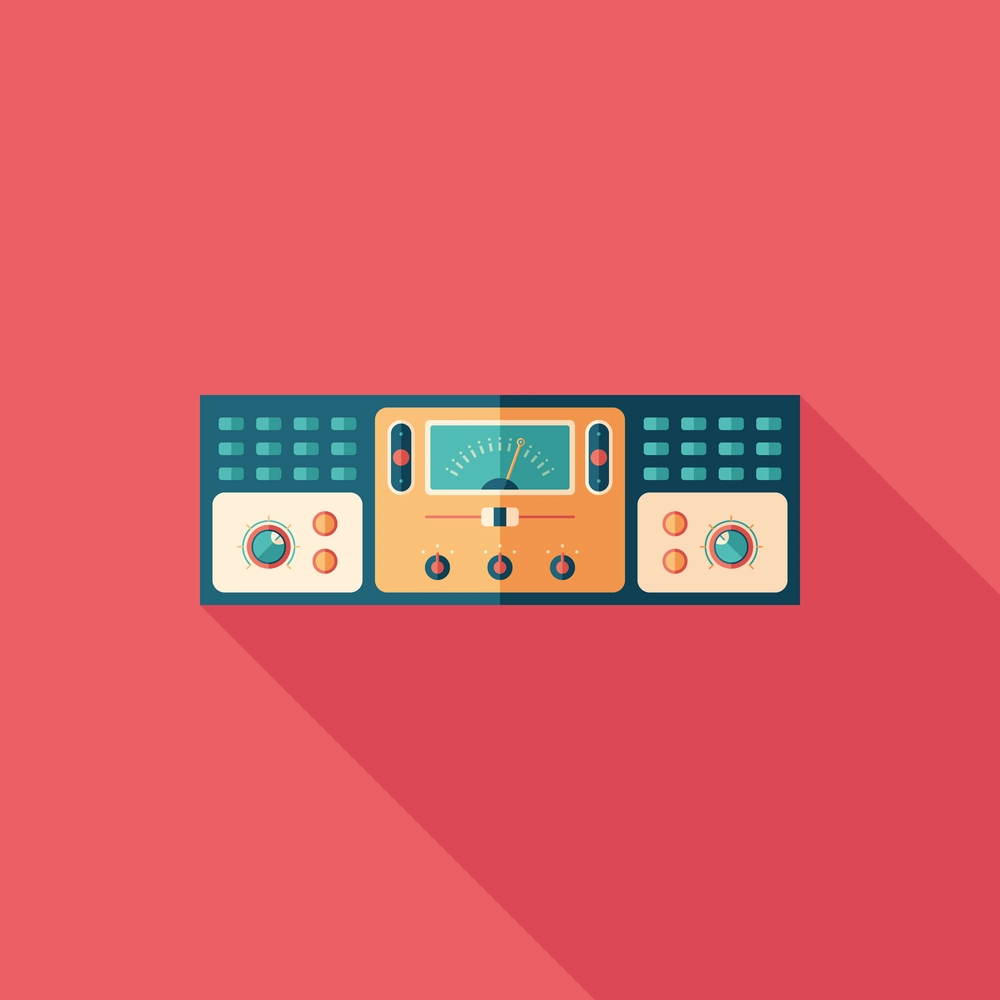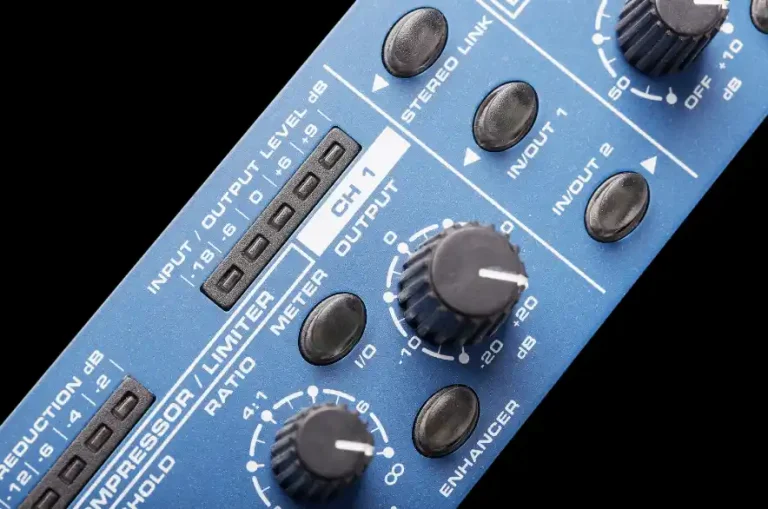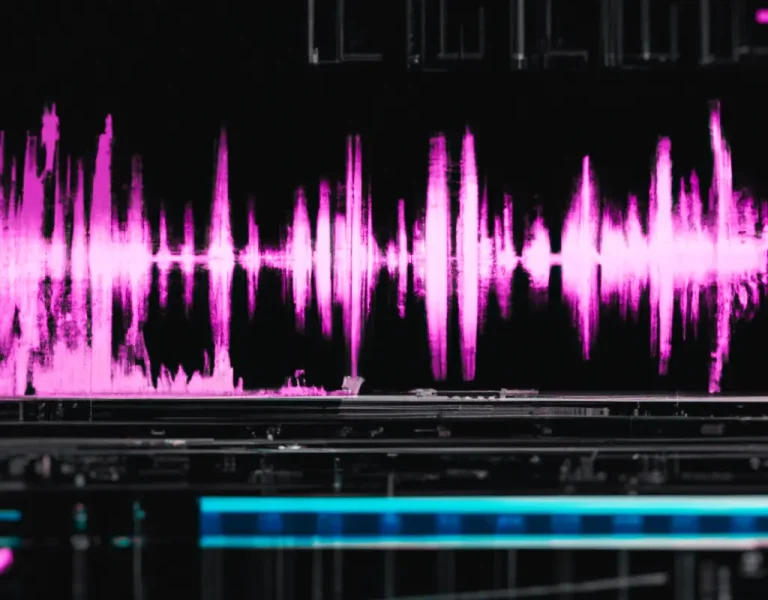Are Hardware Compressors Better Than Software Compressors?
The debate between hardware and software compressors is a heated one.
You might be wondering which type of compressor you should choose for the best results when it comes to audio production.
In the world of audio engineering, compressors play a crucial role in controlling the dynamic range of your tracks.
There are two primary types to consider: hardware and software compressors.
Hardware compressors are physical units that use analog components to process audio signals, often revered for their warm, organic sound.
On the other hand, software compressors are digital plugins that are convenient and easy to use but are sometimes criticized for lacking the character of their analog counterparts.
As you contemplate this critical decision, it’s essential to weigh the pros and cons of each to determine which is better for your unique audio production needs.
Key takeaways:
- Hardware compressors offer a warm, organic sound that is highly sought after.
- Software compressors are convenient and easy to use but may lack the character of hardware compressors.
- Your choice between hardware and software compressors depends on your individual production needs and personal preferences.
Hardware vs Software Compressors: Pros and Cons
Pros of Hardware Compressors
Hardware compressors are known for their unique, high-quality sound. Since they are standalone analog devices, they often provide a more distinctive tonal character. These devices can appeal to many audio engineers due to their tactile controls and visual feedback, allowing for a more hands-on approach to compression.
Some of the advantages of hardware compressors include:
- Exceptional sound quality
- Unique character
- Tactile controls for more precise adjustments
- Visual feedback
Audio engineers often reach for hardware compressors when they want a certain sound or tone from a specific unit, as the individual components used in the devices can shape the character of the audio.
Cons of Hardware Compressors
While they have their benefits, hardware compressors also come with some drawbacks. They can be expensive, and their price often increases with the quality and brand reputation. Furthermore, they require physical space and maintenance, which can be inconvenient for some users.
Let’s summarize the cons of hardware compressors:
- Expensive
- Require physical space
- Maintenance costs
- Less flexibility compared to software compressors
Pros of Software Compressors
Software compressors, on the other hand, provide a lot of flexibility and ease of use. As digital plugins, they can be easily added to your digital audio workstation (DAW), making it simple to experiment with different settings or even multiple compressors simultaneously. Additionally, software compressors typically cost significantly less than hardware compressors, making them more accessible to users with smaller budgets.
The pros of software compressors are:
- Easy to use and integrate into DAWs
- Low cost compared to hardware compressors
- Massive variety of options
- Ability to process multiple channels simultaneously
Cons of Software Compressors
Despite their advantages, software compressors might not always provide the same level of character and depth that hardware compressors do. Some can sound more digital or sterile, while others may lean heavily on algorithmic approximations of analog hardware, which can lead to undesirable artifacts or noise.
Here are some of the cons related to software compressors:
- Digital sound quality
- Dependence on computer processing power
- Lack of tactile controls
| Hardware Compressors | Software Compressors | |
|---|---|---|
| Sound | Unique analog | Digital |
| Ease of use | Tactile controls | DAW integration |
| Price | Expensive | Budget-friendly |
| Flexibility | Limited | Extensive |
In conclusion, both hardware and software compressors have their pros and cons. It’s up to you to determine which will best suit your needs and preferences. Keep in mind the sound qualities and versatility of each option, as well as your budget and working environment, when making your decision.
Technology and Components
Transistors and Amplifiers in Hardware Compressors
In hardware compressors, transistors and amplifiers play a crucial role in the compression process. Transistors provide the necessary gain control, while amplifiers strengthen the audio signal to reduce unwanted noise.
Hardware compressors typically use vintage technology, which can impart a unique and warm character to the sound. For example, the Teletronix LA-2A is a well-known optical compressor that uses transistors and amplifiers to achieve its signature sound.
These components, however, limit the range of control and flexibility when compared to software compressors. Balancing the technical requirements of hardware compressors against noise, headroom, and cost is considered a fine art.
Optical Compressors
Optical compressors are a type of hardware compressor that uses a light-sensitive element and a light source to control gain reduction.
As the audio signal increases in volume, the light source gets brighter, causing the light-sensitive element to reduce the gain of the signal. This results in smooth and natural compression, with the classic example being the aforementioned Teletronix LA-2A.
| Type | Main Component | Key Feature |
|---|---|---|
| Optical | Light Sensors | Smooth, Natural Compression |
Although optical compressors are praised for their musicality and smoothness, they’re not as versatile as other types of hardware and software compressors that offer a greater range of customizability.
Compression Algorithms in Software Plugins
In contrast to hardware compressors, software compressors are powered by complex algorithms that provide a wide range of flexibility and control. With digital signal processing (DSP) technology, software compressors can closely emulate the sonic characteristics of vintage hardware compressors.
A popular plugin like Logic’s compressor offers numerous compression models based on classic hardware units, giving users the ability to experiment and customize their sound without any actual physical limitations.
The downside to software compressors can be a perceived digital sound, but with advancements in technology, the gap between the sound quality of hardware and software compressors continues to shrink.
In conclusion, hardware compressors provide unique sonic characteristics based on their electronic components, while software compressors offer unmatched control and flexibility through advanced compression algorithms.
While both have pros and cons, it all comes down to personal preference and budget when deciding which option is best for your music production needs.
Sound Quality and Tone
Hardware Compressor Signature Sound
When it comes to hardware compressors, they are often renowned for their unique sound and tone.
Many audio engineers appreciate the warmer, more organic qualities they can bring to an audio signal. This “signature sound” gives your recordings a certain character that can be hard to replicate with software compressors alone.
Using hardware compressors provides a sense of authenticity and depth to your audio, much like how vintage gear can add color and character to the mix.
Software Compressor Emulation
On the other hand, software compressors offer flexibility and cost-efficiency. With advancements in technology, software compressors have improved significantly, and many developers now emulate the sound of classic hardware compressors within their digital offerings.
For instance, the Arousor plugin is a reimagining of the popular Distressor hardware compressor, capturing its tone and spirit in a software format. While software compressors can come close to emulating hardware, remember that there’s still a small gap between the real thing and emulation.
Vintage Color
One aspect that makes hardware compressors so appealing is their ability to add “vintage color” to an audio signal. This occurs due to the use of analog components, such as valves, which can impart warm harmonics and natural saturation onto the sound.
With software compressors, these harmonics can be emulated using algorithms, but achieving the same level of accuracy as the real thing can be a challenge.
In conclusion, it’s important to consider your priorities and preferences when deciding between hardware and software compressors.
If you’re after the warmth and character associated with classic analog gear, a hardware compressor might be the right choice for you. On the other hand, if cost-effectiveness and flexibility are important, software compressors can provide similar results with more convenience.
Ultimately, the choice is yours to make based on your projects and personal preferences.
Compression Parameters and Workflow
When comparing hardware and software compressors, it’s essential to consider the differences in compression parameters and workflow. In this section, we’ll explore how attack and release time, threshold and ratio, and visualization and interface impact your decision.
Attack and Release Time
Attack and release time are critical components of compression. The attack time determines how quickly the compressor reacts to an incoming signal above the threshold, while the release time dictates how long the compressor takes to stop acting on a signal once it falls below the threshold.
In hardware compressors, these settings can be adjusted via knobs or dials, giving you a tactile experience. However, they might not offer as much granularity as software compressors.
With software compressors in DAWs, you have more precise control over these parameters. You can usually adjust the attack and release time in milliseconds, allowing for fine-tuning and experimentation with your sound.
Threshold and Ratio
Threshold and ratio are two other essential parameters in compression. The threshold indicates the level at which compression kicks in, while the ratio determines the amount of compression applied to the signal above the threshold.
Hardware compressors may have specific ranges for these settings, limiting their flexibility.
However, these limitations can sometimes be a blessing as they may contribute to the unique sound quality of certain hardware units. On the other hand, software compressors in your DAW give you unparalleled control over these parameters, enabling you to dial in the exact settings that work best for your mix.
Visualization and Interface
The visualization and interface of hardware and software compressors can also influence your workflow. Hardware compressors usually have LEDs or meters to display gain reduction, while software compressors often provide detailed visual feedback in real-time, such as waveform and gain reduction graphs.
This comprehensive visualization in software compressors can be beneficial for understanding how your compression settings affect your audio. It allows you to see the impact of your attack, release, threshold, and ratio settings on the waveform, making it easier to fine-tune your sound with precision.
In conclusion, hardware and software compressors have unique strengths and weaknesses concerning compression parameters and workflow. Ultimately, your choice may boil down to personal preference and the specific sonic characteristics you’re looking for in your mix.
Conclusion
So, are hardware compressors better than software compressors? It really depends on your needs and preferences.
Hardware compressors can offer a unique sound and color that is hard to replicate with software (source). However, they can also be pricey, and setting them up might take longer.
On the flip side, software compressors are easy to use and generally more affordable. But they can sometimes sound cheap and digital (source). Ultimately, it’s about finding the compressor that suits your workflow and desired sound quality.
You might be worried that you’ll make the wrong choice or that your music production will suffer without a hardware compressor. Fear not! Both options have produced great results in music, and you can always experiment and explore as you grow. This article should give you a clear perspective and help align your decisions with your priorities.
So go ahead, dive into the world of compressors, and create the sound that represents you best! Remember, it’s about the music – not the gear.







